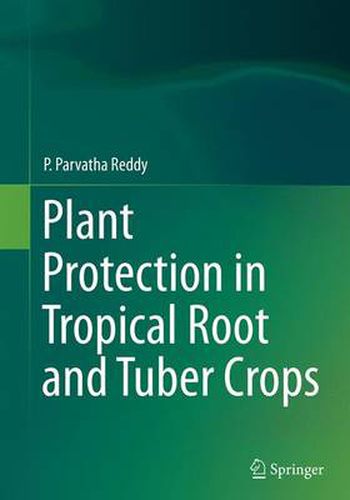Readings Newsletter
Become a Readings Member to make your shopping experience even easier.
Sign in or sign up for free!
You’re not far away from qualifying for FREE standard shipping within Australia
You’ve qualified for FREE standard shipping within Australia
The cart is loading…






This book is a compilation of information on insect/mite/vertebrate pests and fungal/bacterial/viral/mycoplasma/nematode diseases of tropical root and tuber crops such as cassava, sweet potato, yams, taro, Amorphophallus, yam bean and tannia. The book highlights the distribution, symptoms and damage, biology, survival and spread of each pest and describes management methods. It also sheds light on different eco-friendly pest management strategies including physical, cultural, chemical, biological, host resistance and integrated methods. The book is written in a lucid style using easy-to-understand language and offers adoptable recommendations involving eco-friendly control measures. It serves as a useful reference source for policy makers, research and extension workers, practicing farmers and students. The material can also be used for teaching post graduate courses in state agricultural universities.
$9.00 standard shipping within Australia
FREE standard shipping within Australia for orders over $100.00
Express & International shipping calculated at checkout
This book is a compilation of information on insect/mite/vertebrate pests and fungal/bacterial/viral/mycoplasma/nematode diseases of tropical root and tuber crops such as cassava, sweet potato, yams, taro, Amorphophallus, yam bean and tannia. The book highlights the distribution, symptoms and damage, biology, survival and spread of each pest and describes management methods. It also sheds light on different eco-friendly pest management strategies including physical, cultural, chemical, biological, host resistance and integrated methods. The book is written in a lucid style using easy-to-understand language and offers adoptable recommendations involving eco-friendly control measures. It serves as a useful reference source for policy makers, research and extension workers, practicing farmers and students. The material can also be used for teaching post graduate courses in state agricultural universities.